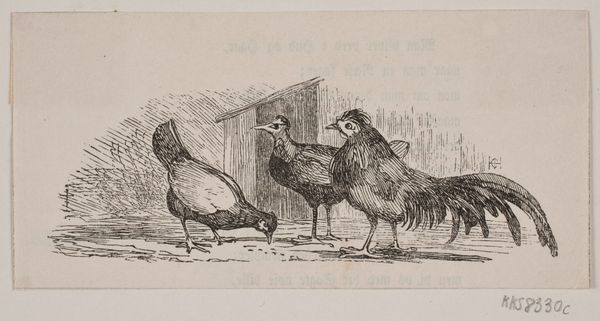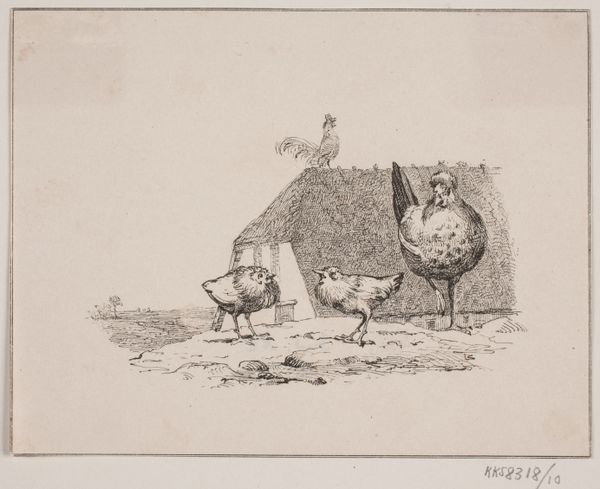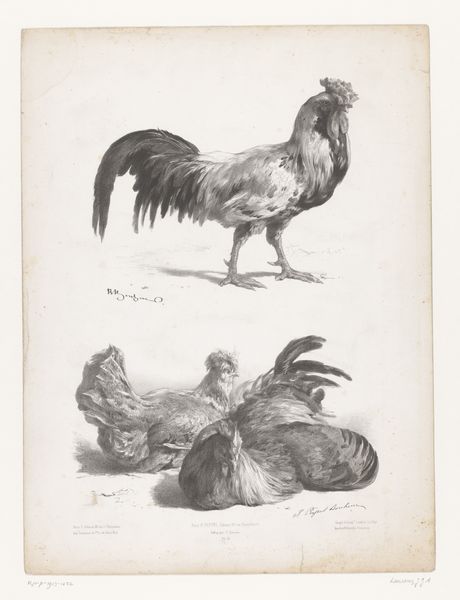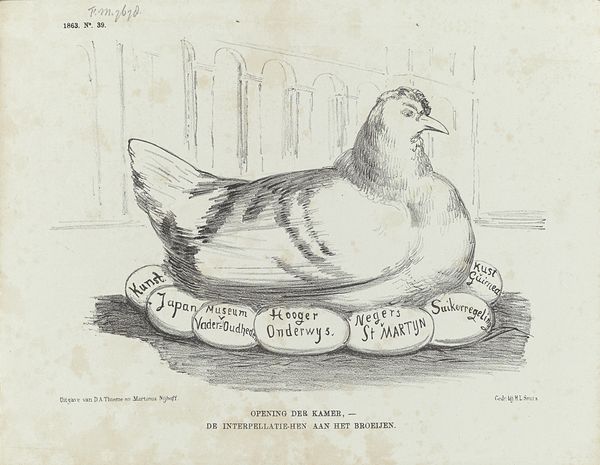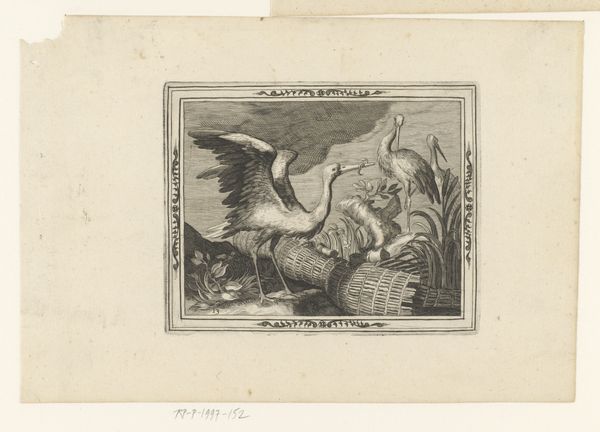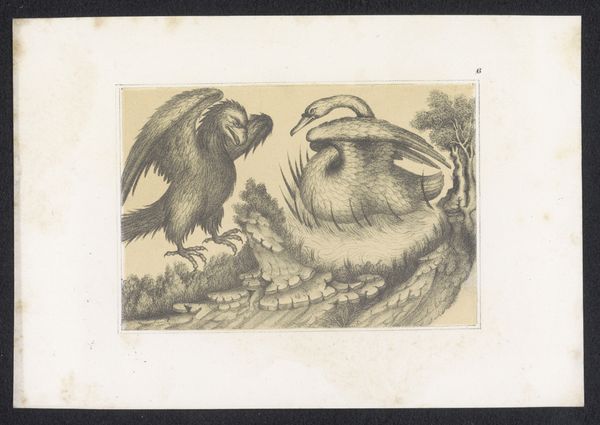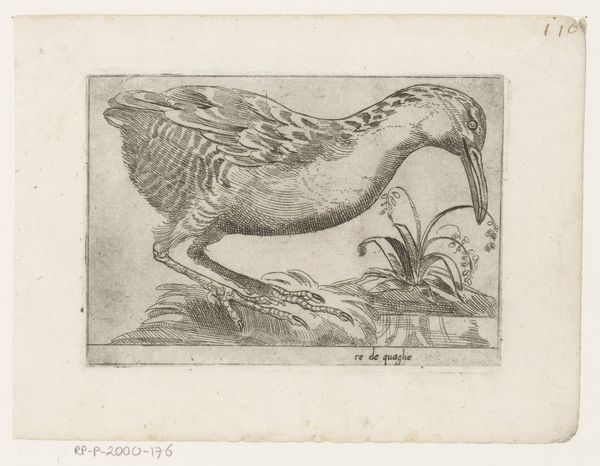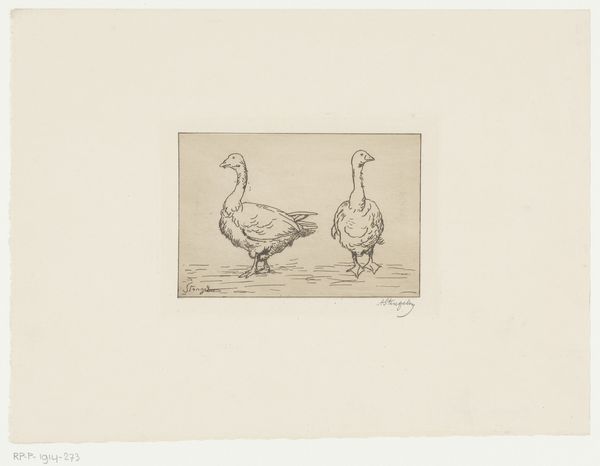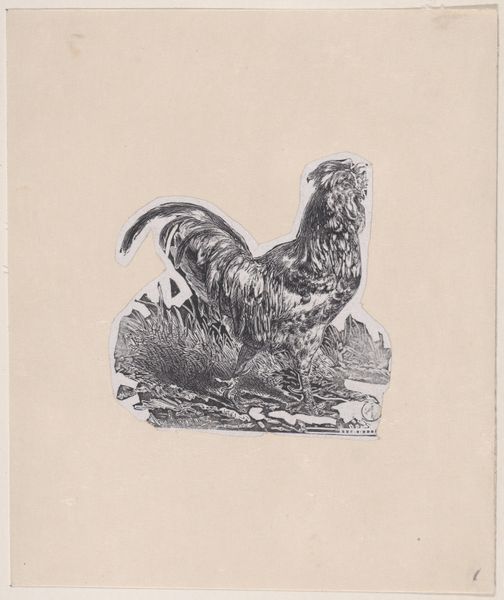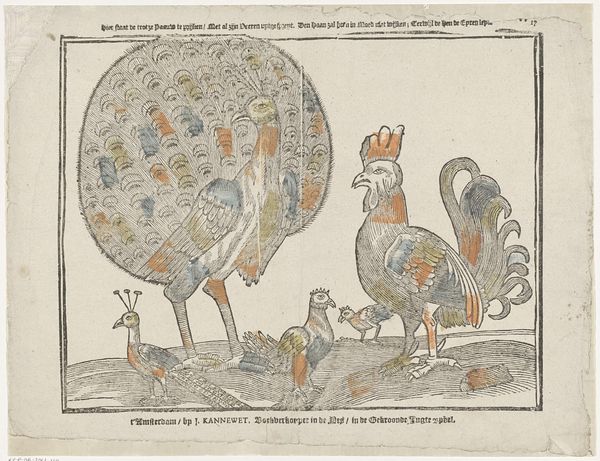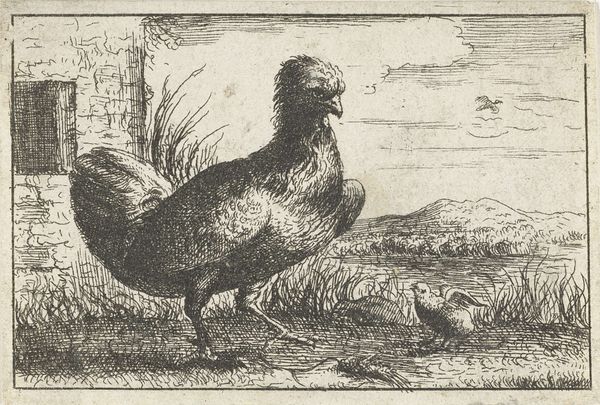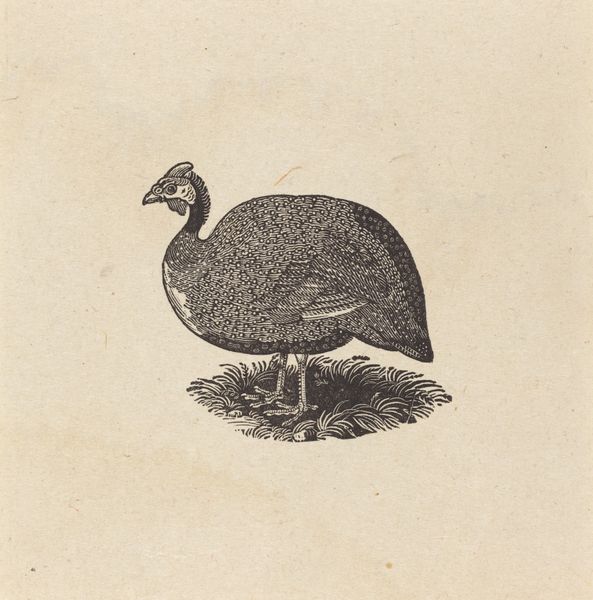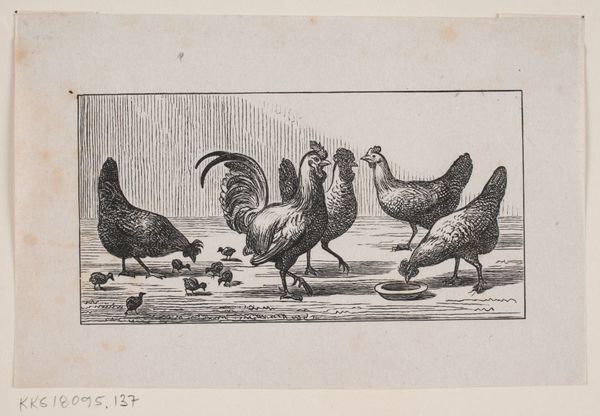
drawing, print, pen
drawing
narrative-art
caricature
pen
academic-art
Dimensions: height 215 mm, width 275 mm
Copyright: Rijks Museum: Open Domain
Curator: This piece, "Spotprent op Thorbecke, 1872," by Johan Michaël Schmidt Crans, executed in pen, drawing, and print, presents a compelling visual argument. What strikes you first? Editor: Well, I'm immediately drawn to the sort of dejected-looking chicken with a man's head surrounded by eggs labeled with things like "taxes" and "defense." It seems quite critical, but I’m unsure of what to make of it. How do you interpret this work through a materialist lens? Curator: Notice the lithographic print, one of many made for mass consumption, a deliberately cheap and accessible medium. This very accessibility allows the artist to circulate this political critique widely. It reduces Thorbecke's stature, associating him with something as ordinary as a chicken. These aren't just any eggs; they're inscribed with socio-political issues that touch every class. "Higher Education," "Taxes" — what are these commonplace yet critical components of this society actually worth, based on this medium's rendering of events? Editor: So, the act of mass-producing and circulating these critical depictions, turning political figures into farm animals and national issues into flawed eggs, that’s the art? Is the cheapness of the reproduction crucial? Curator: Precisely. Consider the economic and social capital necessary for art to thrive. The 'cheapness', as you put it, directly challenges the concept of art being confined to elite patrons and institutions. What is Schmidt Crans suggesting about these issues being left ‘laid’ by this…chicken-man? Is he mocking these proposed resolutions, or simply saying the eggs were never properly hatched? Editor: I see what you mean! By utilizing readily available printing technology, he transforms socio-political issues, once untouchable, into common "knowledge", something the public is meant to confront, question, and dissect together. So much to mull over; thank you! Curator: Indeed. This cartoon challenges us to think critically about the relationship between political power, artistic production, and public consumption, and ultimately—to evaluate how each citizen internalizes the effects of that cultural landscape.
Comments
No comments
Be the first to comment and join the conversation on the ultimate creative platform.
